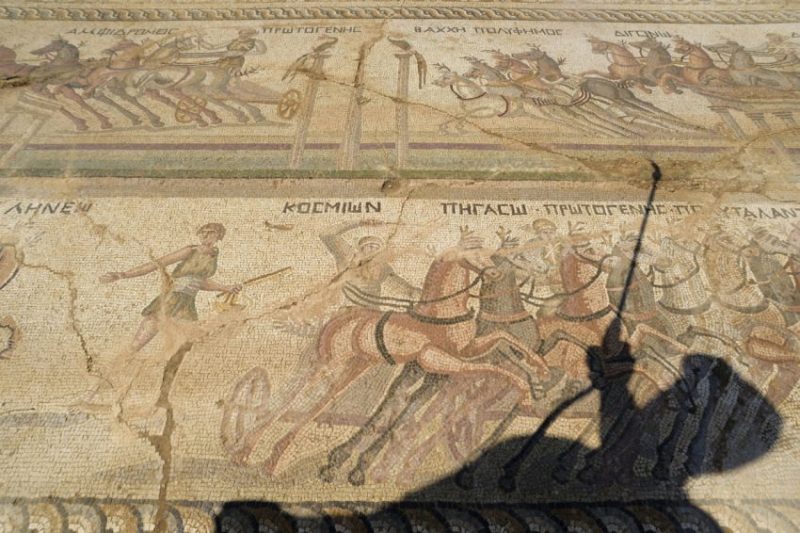In Nicosia, Cyprus has been discovered a mosaic floor dating back to the 4th century that portrays scenes from a chariot contest in the Hippodrome – the only one of its kind located in Cyprus and one of only a few in the world, a Cypriot archaeologist stated.
Cyprus Antiquities Division archaeologist Fryni Hadjichristofi advised the Associated Press that many hundreds of ancient mosaic grounds have been revealed around the world, but only seven portray comparable chariot duels at the Hippodrome.
What differentiates this mosaic is its decorative features, and the fact that it portrays whole scenes from duels in which four chariots, each with a team of four horses, are competing. This may be a description of different groups in competition with each other in ancient Rome.
The mosaic is 11 meters long and four meters wide, but is not fully exposed yet. It might be part of a villa that could have belonged to a prosperous nobleman or individual when Cyprus was under Roman rule.
A small piece of the mosaic was first discovered by an area farmer tilling his land back in 1938. Authorities marked the area, but full-fledged digs didn’t proceed until almost 80 years later because of work at many other sites the Antiquities Department had prioritized Hadjichristofi told The Star
The mosaic, located about 30 kilometers west of capital Nicosia, also affords new knowledge of the ancient historical island’s interior, about which still not much is known.
Most of the significant ancient discoveries located on the island have been near the coastlines, where towns and cities thrived in olden times. The most primitive village discovered in Cyprus dates back to the 10th millennium B.C.
A small fragment of the mosaic was found by a farmer preparing his property in 1938. Powers that be patented the area, but full-fledged digs would not proceed until 80 years later. There was work at numerous other sites that the Antiquities Division had prioritized.
The area, adjoining a river, has always been recognized for its bountiful ground and magnificent orchards. Cyprus had been a prosperous island in ancient times, manufacturing copper and, displaying a prominent theory as to how the island got its name, timber from plentiful forests.
The people also traded in pottery, countless cases of which have been discovered in neighboring countries.
